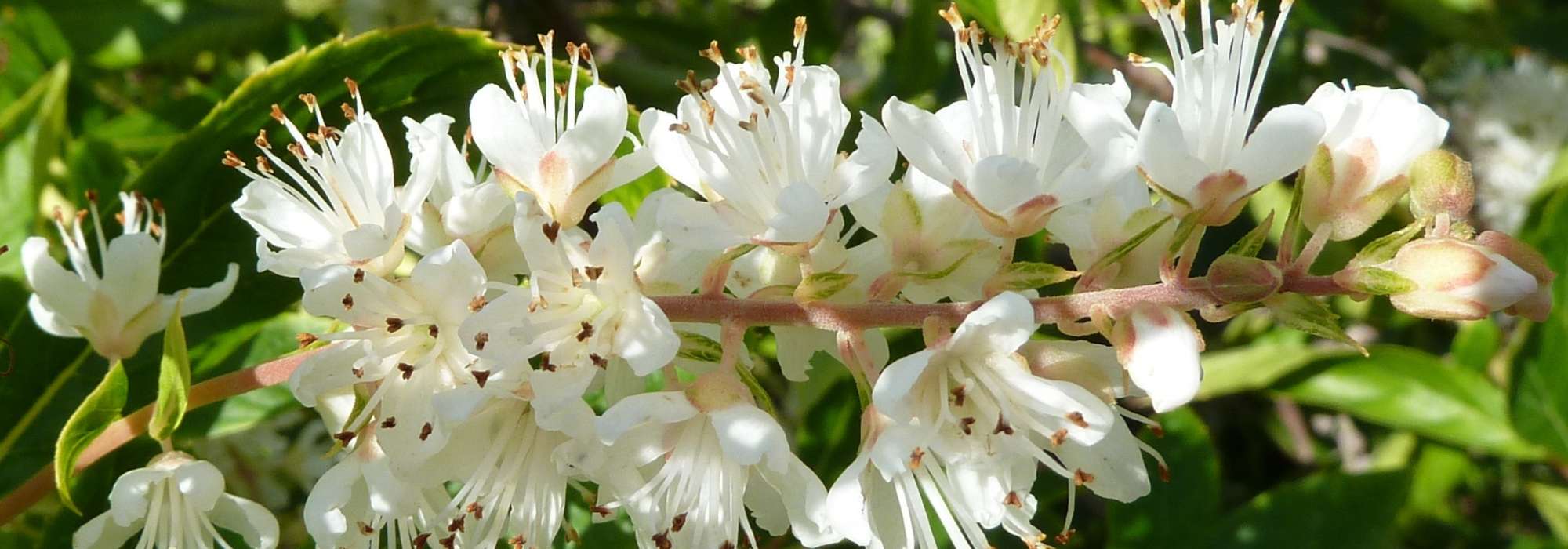
Clethra: planting, pruning and care
Contents
Clethra, in a nutshell
- Clethra is a very simple bush to grow that enjoys cool, semi-shaded to shaded locations
- Its generous and late flowering, occurring between July and September, produces charming, highly fragrant and melliferous spikes
- Its elongated, light green foliage acquires a beautiful golden autumn coloration
- There are different varieties, from compact to vigorous, that can be integrated into both a natural garden and an urban garden
A word from our expert
Clethras are relatively unknown bushes, discreet due to their cream-white or pink flowering depending on the variety, but they fill the surroundings with their honey scent at the end of the season. They do not really require pruning and are grown in partially shaded borders, or to flower a container in a courtyard or even at the foot of a large tree.
The long spikes of 5 to 7 cm of white or pinkish flowers with orange stamens adorn the tips of the branches, taking on a lovely arched shape. The intense honey scent emitted by certain species like alnifolia is valuable for bees, bumblebees, butterflies, and hummingbirds in its habitat, who delight in the nectar throughout the summer. The bush is relatively suckering, allowing it to easily colonise wet areas.
In our gardens, the deciduous and hardy species form spreading bushes with a natural style, densely foliated. Some species, like Clethra alnifolia, native to the USA, are very hardy and are somewhat more frequently planted in our climates, while others, such as Clethra arborea, a tree native to Madeira, require mild conditions to flourish with a flowering reminiscent of lily of the valley. Clethra delavayi, barbinervis, and fargesii are native to China; they display a warm, melancholic golden foliage in autumn.
Clethras are planted in acidic, yet fertile, humus-bearing soil, maintaining freshness while being well-drained.
Description and botany
Botanical data
- Latin name Clethra
- Family Clethraceae
- Common name Clethra
- Flowering between July and September
- Height between 1 and 3 m
- Sun exposure sun, partial shade or shade
- Soil type acid, humus-bearing and cool
The etymology of the word clethra comes from Greek meaning “alder”, due to its resemblance to this tree characteristic of wet environments.
The genus Clethra comprises about thirty species of trees, bushes, and shrubs belonging to the Clethraceae family, mostly deciduous, living in the undergrowth of East Asia or North America. There are a few evergreen shrubs, particularly in Southeast Asia or on subtropical islands like Madeira (Clethra arborea).
The alder-leaved clethra, Clethra alnifolia, is the most widespread species in our gardens. It occupies the undergrowth of the humid forests of the east coast of the United States, from southern Maine to eastern Texas. This shrub forms thickets up to 3 m high (1.20 m in cultivation).

Clethra alnifolia – botanical illustration
The dense vegetation consists of a foliage that is thin, alternate, and a bright green hue. The obovate lamina, measuring 5 to 10 cm long and 2 to 4 cm wide, is serrated and bears quite prominent veins, even more marked in the Korean species Clethra babinervis. This latter also has a bright red petiole extended by the midrib, which contrasts beautifully with the intense green lamina. This species has received the Award of Garden Merit, and its cultivar ‘Great Star’ was selected at the Vasterival garden in Normandy. It is also distinguished by its stunning bark in coloured plates of pink, green, and brown. The shrub reaches 4 m high and 3 m wide after 10 years, forming a very decorative tufted small tree. Its autumn coloration is also spectacular, blending orange and burgundy red tones, while the shrub is adorned with long, villous white clusters measuring 5 to 15 cm long in July-August. In contrast, Clethra alnifolia Hummingbird forms a compact bush of 1 m in all directions, ideal for filling a pot or the base of a large hydrangea, for example.
The flowering occurs in the form of clusters 8 to 15 cm long, composed of small, campanulate, white, fluffy flowers that are generally very fragrant. The Clethra alnifolia ‘Ruby Spice’ is a form with pink and compact flowers, while ‘Pink Spire’ is more vigorous (2 x 1 m) with bright pink buds and a paler flowering. The flowers have a calyx with 5 sepals, a corolla with 5 rounded petals at the top, 10 prominent stamens with orange anthers, and 1 pistil ending in 3 stigmas. The flowers, which are very melliferous, bloom from the base to the top of the cluster, thus stretching over several weeks.
The autumn fruiting appears in the form of clusters of brown capsules topped by the pistil, initially red, giving a very delicate effect overall. This decorative fruiting lasts until winter and provides a valuable food reserve for birds.

Clethra alnifolia: evolution of flowering (photos Plant Image Library-Flickr)
Read also
Itea: planting, pruning and careThe main varieties of Clethra
Our favourites
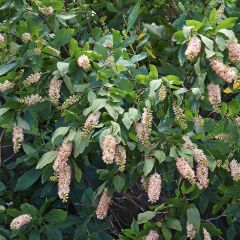
Clethra alnifolia
- Flowering time October, November
- Height at maturity 2 m
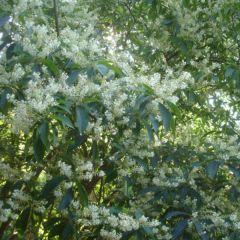
Clethra barbinervis
- Flowering time July to October
- Height at maturity 3 m
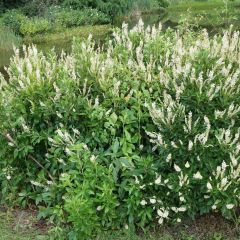
Clethra alnifolia Hummingbird
- Flowering time August, September
- Height at maturity 90 cm
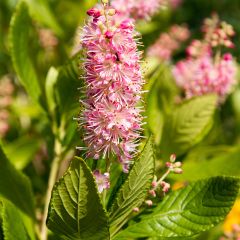
Clethra alnifolia Ruby Spice
- Flowering time October, November
- Height at maturity 1 m
Discover other Clethra
View all →Available in 2 sizes
Available in 2 sizes
Available in 2 sizes
Available in 1 sizes
Available in 1 sizes
Available in 1 sizes
Available in 1 sizes
Available in 1 sizes
Available in 1 sizes
Available in 1 sizes
Planting
Where to plant Clethra?
Clethra alnifolia, native to the swampy forests of boreal America, prefers cool, somewhat shaded situations and rich, loose, well-drained soils that are also acidic. They struggle with high heat and drought and can only be planted in full sun in regions with moderately warm summers or when the soil remains cool. They tolerate completely shaded exposures but their growth may be slowed and their flowering less abundant.
The hardiness of common species (alnifolia, barbinervis, delavayi) exceeds -15°C. Be cautious with evergreen species like C. arborea, which is sensitive to frosts below -4°C. However, it can be grown in pots just like the other species.
When to plant?
Plant Clethra in autumn or spring, avoiding frost periods.
How to plant?
- Soak the root ball in a bucket of water to thoroughly moisten it.
- Dig a wide planting hole, at least 50 cm deep to encourage the clump to spread.
- Add a 10 cm drainage layer (gravel, sand…) if your soil is clayey.
- Lighten the soil with peat or heather soil if the soil is very sandy or too clayey, as well as to acidify the soil.
- Place the plant in the planting hole.
- Replace the soil and lightly firm it down.
- Water.
- Spread a layer of bark or pine needle mulch at the base to maintain good moisture around the roots and keep the acidity balanced. This will also limit the growth of weeds.
Recovery is easy and quick, requiring only monitoring of watering during the first two years following planting.
In pots, you can use pure heather soil to plant the clethra while ensuring it does not dry out deeply. It is indeed very difficult to re-moisten this type of soil unless a complete soaking is performed.

Clethra barbinervis in full bloom (photo Cultivar413-Flickr)
Read also
Clethra: planting, pruning and careCare
Water regularly for the first two years, especially during hot and dry periods. Remove dead flowers to avoid weakening the clethra unless you wish to enjoy the fruiting enhanced by the droplets of dew or frost that cling to the capsules. Simply remove dead, diseased or broken branches and cut back dry fruits at the end of winter by trimming the shoots by half. Occasionally cut the oldest stems back to the base to renew the clump.
This bush is naturally resistant to diseases and parasitic threats.
Multiplication
Clethra tends to sucker, making it very easy to extract a sucker with a spade to obtain a new plant in autumn. It can also be propagated by cuttings.
Propagation by cuttings
In late August/September, prepare a deep pot by filling it with potting soil mixed with sand, or take your cuttings in the ground if it is light, after aerating it with a fork-spade and then moistening it.
- Take a lignified shoot about 10 cm long from a shoot of the year that is still green but hardened at the base during summer.
- Remove the leaves near the base of the cutting, and trim the others to reduce the foliar surface.
- Insert the cuttings into the soil to two-thirds of their height, ensuring they do not touch each other.
- Gently firm the soil around them to eliminate air pockets and ensure good contact between the potting soil and the cutting.
- Place them in the shade.
- By the end of September, place the culture under a frame until spring.
- Separate the rooted cuttings in spring to plant them in individual pots until the following autumn.
Uses and associations
Clethra alnifolia is ideal for heather soil beds or at the foot of large deciduous trees. Well-suited for container cultivation, use it to adorn a terrace or patio. Don’t hesitate to plant it near a living or passing area to enjoy its delicate spicy fragrance!
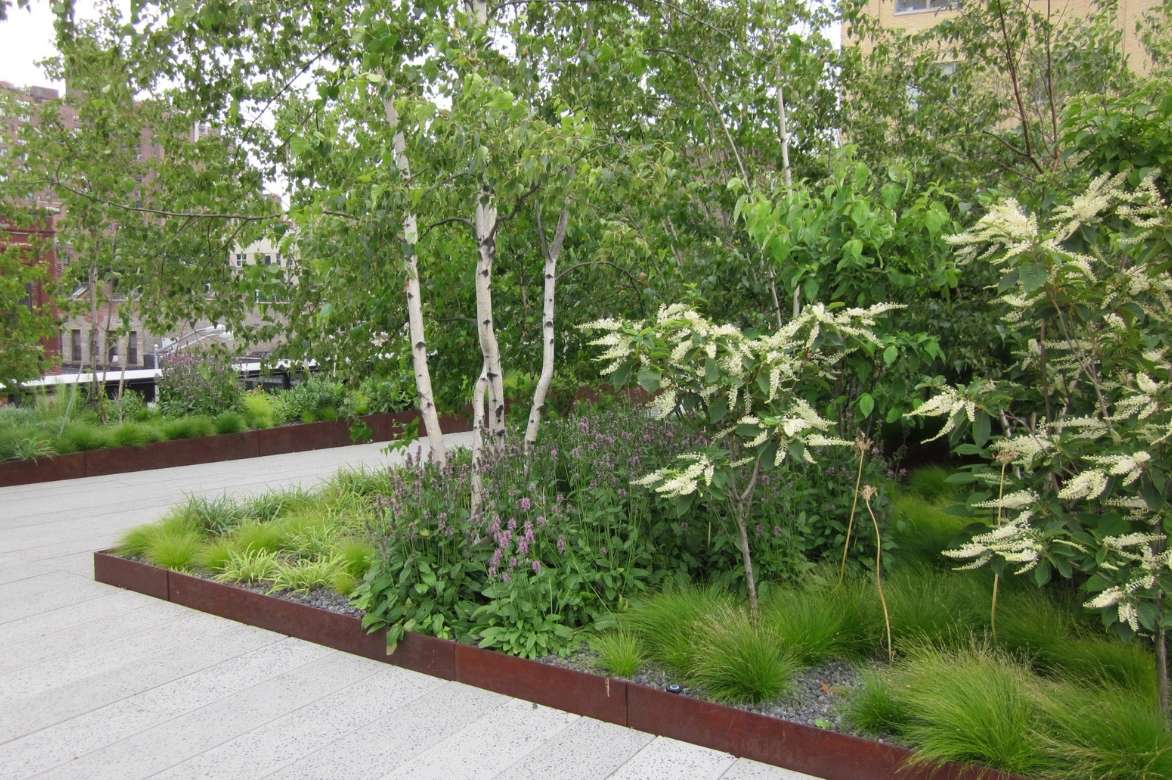
A beautiful ensemble in the Gansevoort wood of the High Line in New York: Betula populifolia ‘Whitespire’, Clethra barbinervis, Stachys monieri ‘Hummelo’ and low grasses (photo Sharon_k-Flickr)
Its dwarf cultivar Clethra alnifolia Hummingbird, characterised by a profusion of spikes in July and August and exceptional autumn foliage, can be used to cover a damp or shaded bank to form a small grove, as well as brighten up north or east-facing terraces and balconies.
It can be planted in isolation to animate the space on its own or be paired with heather soil bushes such as a Chinese Azalea ‘Orangeade’, a Hydrangea ‘Mousseline’, or a Camellia ‘Spring Festival’ to spread and vary the flowering periods. The Clethra alnifolia ‘Hummingbird’ can also be used within a low hedge, combined with shrubs featuring decorative foliage.
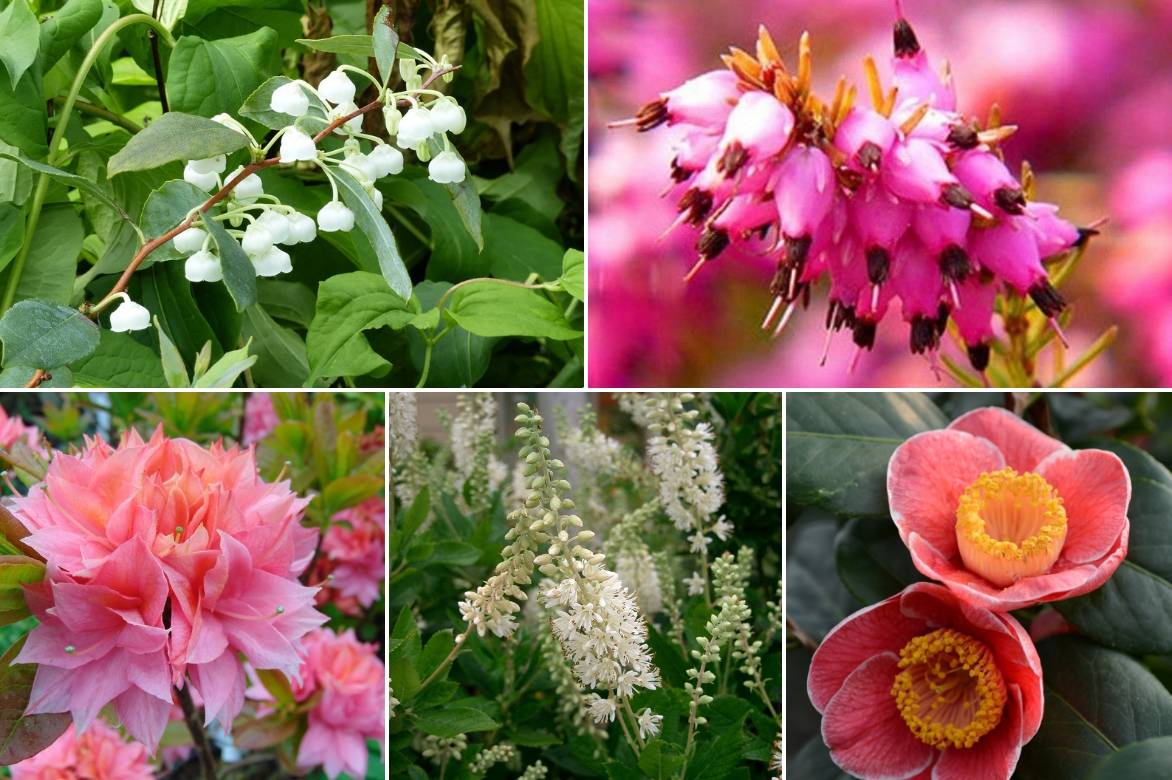
An idea for pairing for blooms for a good part of the year: Clethra alnifolia, Chinese Azalea ‘Kilian’, Camellia ‘Sanpei Tsubaki’, Zenobia pulverulenta ‘Blue Sky’ and Erica x darleyensis ‘Eva Gold’ as ground cover
The large Clethra barbinervis offers a Japanese effect with its trailing branches and makes an ideal landscape backdrop. It also fits perfectly into a free hedge or a bed accompanied by photinias, elderberries, Japanese quinces, flowering cherries, Pieris, etc., where it will add a fragrant and theatrical touch in all seasons.
To go further
Discover our wide range of Clethra.
- Subscribe!
- Contents
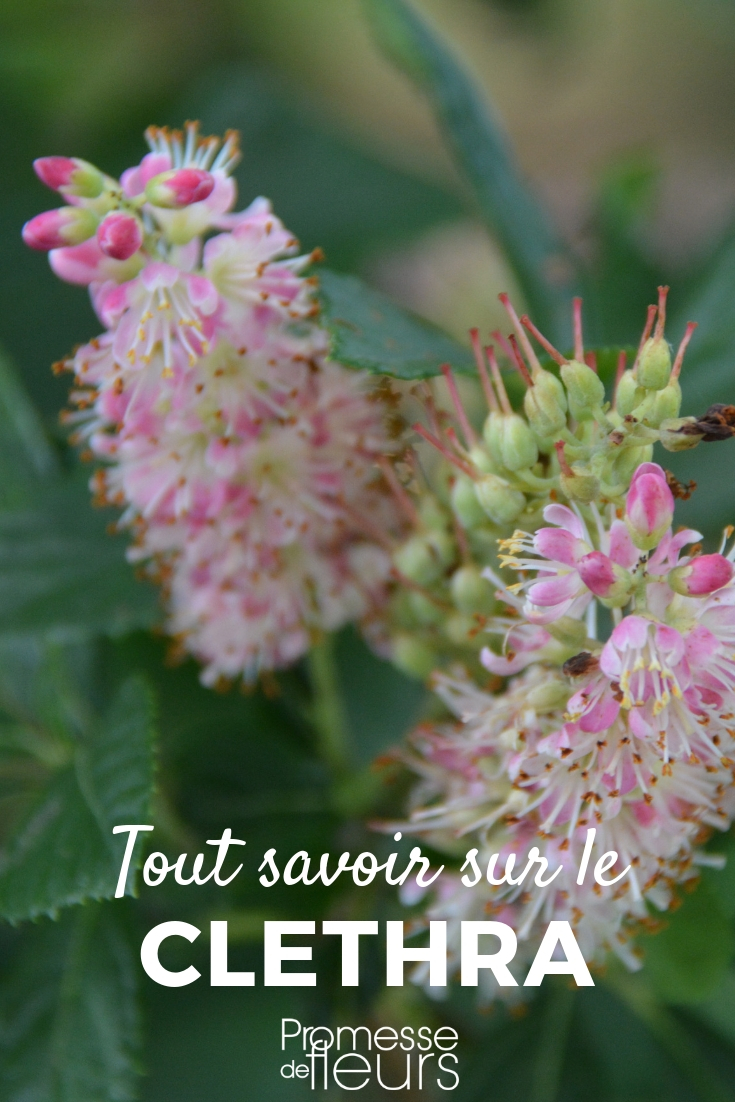






























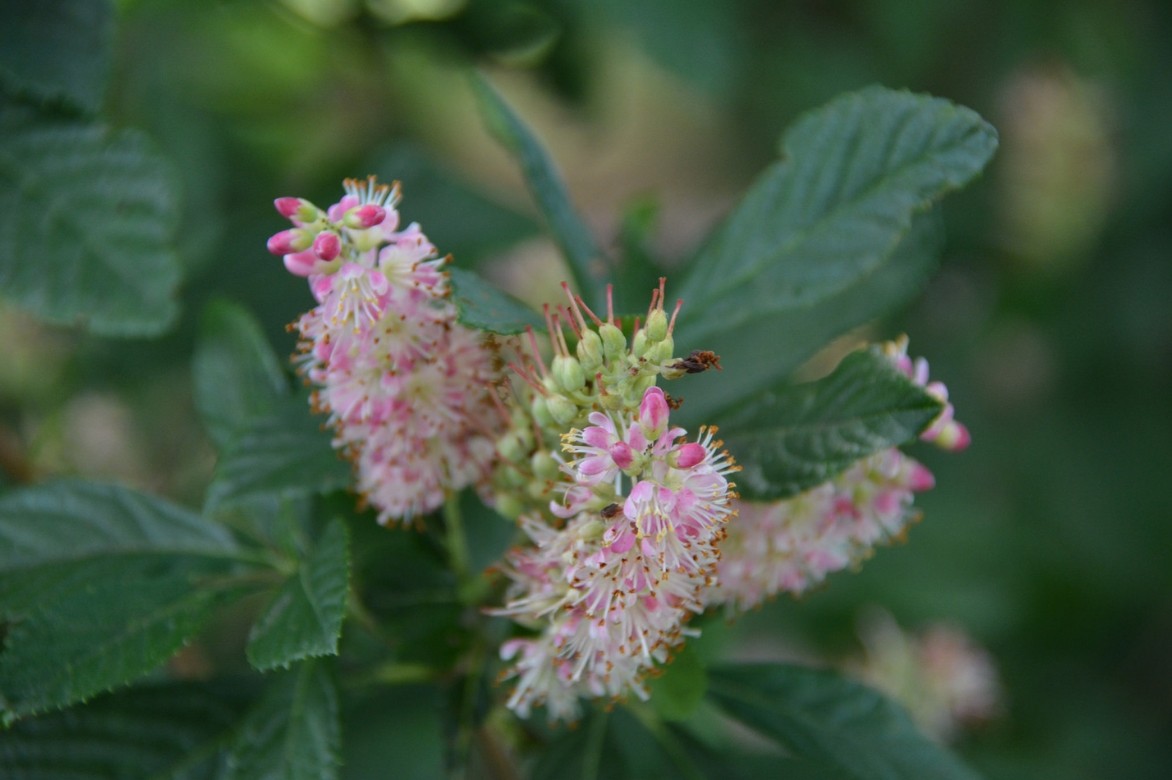


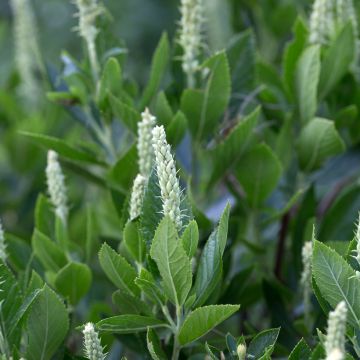
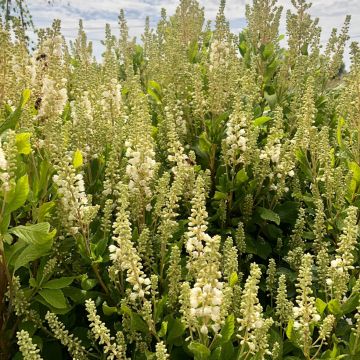
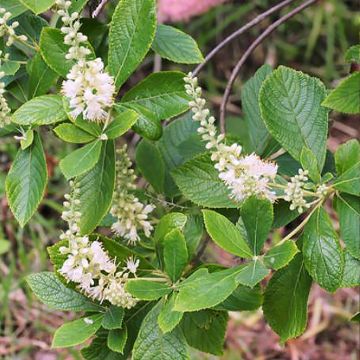
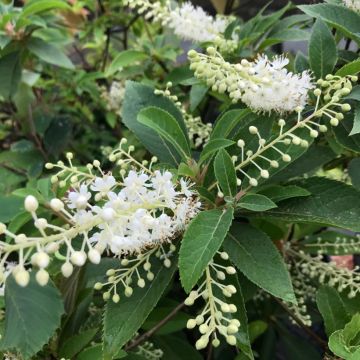
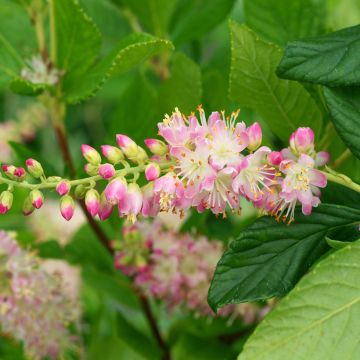
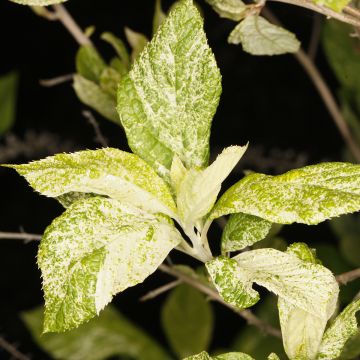
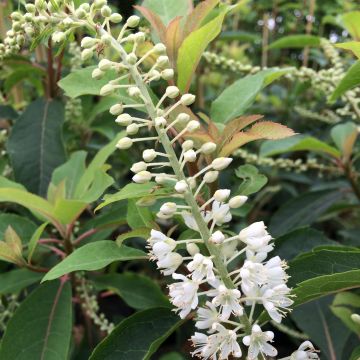


Comments